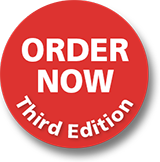Chapter 9 – Reading development
Chapter Summary
Reading is a process of constructing meaning from print and other symbols. Reading involves active problem-solving where a reader checks against several sources of information: letter-sounds, syntax and meaning. There are different phases of reading development: beginning, early-emergent, emergent, early, transitional and extending. Instructional reading books can be matched to the child’s learning level, which is where a child reads at approximately 90–94 per cent accuracy, leaving some words that still may be a challenge to read. Observing children reading and taking a record of reading behaviour provides a window into the child’s processing of print.
Many teachers organise sets of levelled books to provide information about children’s development in literacy. They organise the books into a gradient of difficulty based on the decodability of new words, conceptual load, the complexity of syntax, the vocabulary load, and the size and placement of text on the page, plus the amount of contextual support in the illustrations. As well as a careful text gradient for assessing literacy progress, it is important to pay attention to children’s reading interests.
Levelled books can be used to assess the child’s use of reading strategies, for selecting children for small-group work and for selecting texts that promote reading challenges as well as scaffolding support.
Teachers need to observe the children to assess their accuracy of reading and identify their comprehension and reading fluency. Teachers find it useful to find out how many high-frequency words children can read by sight and write independently. Knowing how to read and write high- frequency words speeds up a child’s reading and writing.
Study Questions
Main ideas
What is the definition of reading?
What are the information sources used by a reader?
In the early stages of reading, a child learns concepts about print. What are the ten most important concepts of print in your opinion? How might English concepts of print differ from other languages.
Application to a developmental stage
Looking at the text examples in this chapter, what are the key factors in creating text complexity?
Diverse learners
What are the cautions about text levels when considering children at the beginning of school and in Year 2?
Assessment
Listen to the three children reading in the videos on the website. Download the recording sheets. Practise taking a record of reading behaviour.
Teaching plans
Based on the assessment of reading in the videos, what would you teach next to each of the readers?

